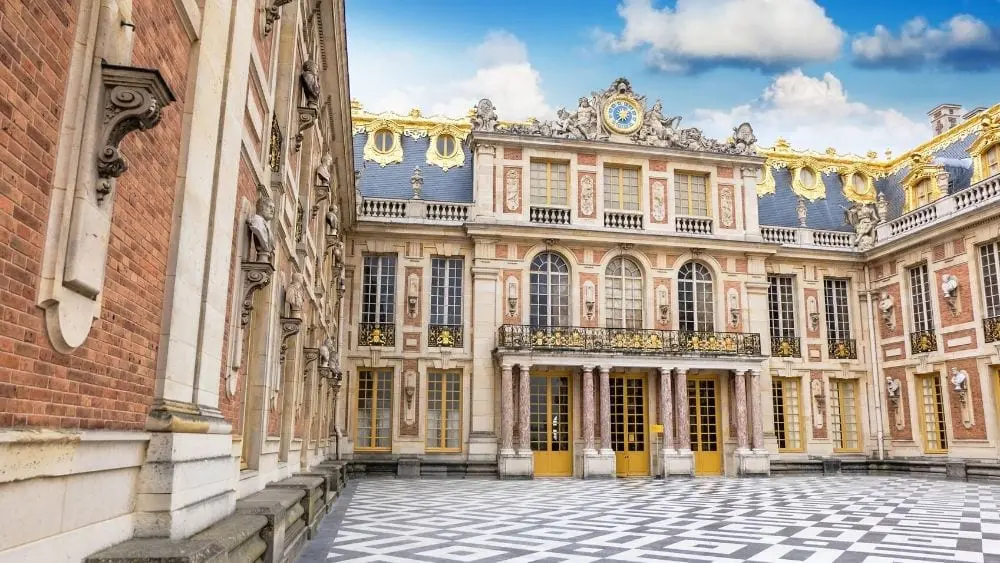
Officially known as the Public Establishment of the Palace, Museum and National Estate of Versailles, the Palace of Versailles was the royal residence of France for just over 100 years. Now a popular tourist attraction – because who doesn’t want to ogle at the uber-rich? – Versailles also stands as a physical representation of the Ancien Régime.
Looking to bring a little French history into your home’s look? Let’s take a closer look at Versailles to figure out how to channel this elegance into your own home.
A Bit of History
To dive into the interior design of the palace of Versailles, it might help to have a micro understanding of the history behind this iconic French structure. The grand palace originated as a “meek” two-story hunting lodge under Louis XIII, also known as Louis the Just, in the 1620’s. The property was expanded and enlarged by the well-known Sun King, Louis XIV, from 1661 until his death in 1715. For seven years following Louis XIV’s passing, the official royal residence and location of the government was moved to Paris until Louis XV – also known as Louis the Beloved, for at least a brief time – came of age as the next king of France.
Again, major renovations took place during Louis XV’s reign. Over the next 50 years, the Salon of Hercules and the Royal Opera were constructed within Versailles, the famous Ambassador’s Staircase was demolished, and construction on a new north wing began. However, the north wing was not complete until after Louis XVI had succeeded the throne. The final monarch before the French Revolution, Louis XVI and his wife, well-known Queen Marie Antoinette, continued renovations to Versailles until 1789 when they were forced to return to Paris at the demands of the enraged French citizens.
Understanding how Versailles has traded hands over the years is key to understanding why so many different architectural and interior design styles influenced the property.
Channeling the Grandeur and Gaudiness
The bourgeoisie of France are known for their over-the-top lifestyle, but does this mean you need to invest in pure gold for gilded crown molding to channel it? Absolutely not! Instead, keep in mind the overarching goal that permeates the design of Versailles: Overwhelming the viewer. There are plenty of other ways to go about this.
Oversized Furniture
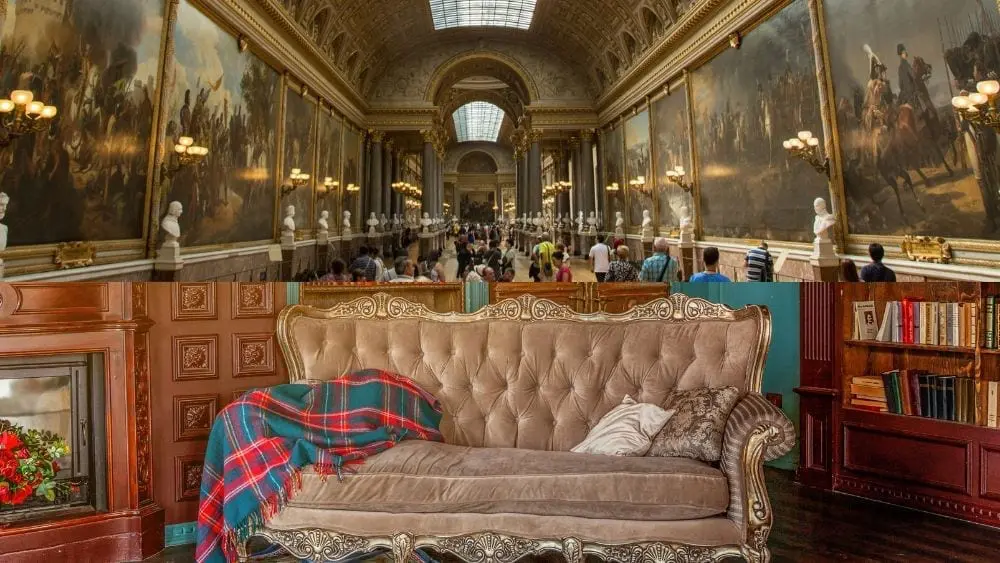
Bottom: A large couch, too big for the space it’s in, but without crowding the room.
One of the ways to achieve the grandeur of Versailles is to embrace the larger-than-life vibe for which the palace is known. Furniture and décor within the palace is often meant to dwarf the viewer: Thrones on raised daises, canopies reaching the ceiling, and paintings nearly 20 feet tall all give visitors the sense they’re walking through an oversized and fantastical dollhouse, not a place that was once a home.
If life-size portraits or floor-to-ceiling windows aren’t an option, you can achieve this aesthetic by bringing in furniture slightly larger than the space allotted to it. Even better, think about extending certain features – such as bookshelves and fireplace mantles – to reach the ceiling, elongating the room overall. If this isn’t an option, select large pieces of artwork to cover wide expanses of wall.
Arabesque
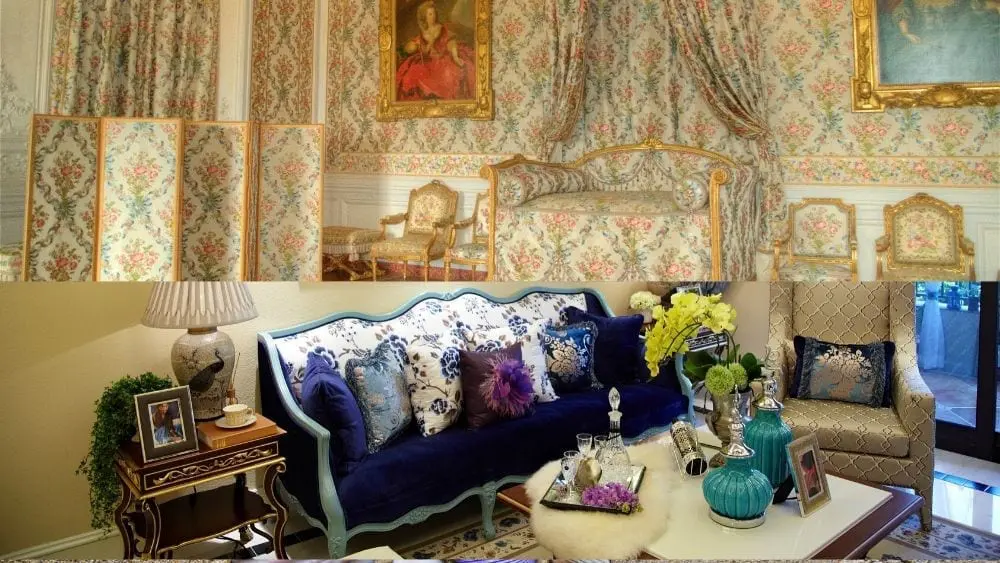
Bottom: A subdued and more modern use of arabesque.
This style, recognized by its intricate surface decorations comprised of interwoven segments such as vines or tendrils, is present throughout the design of Versailles, and also is featured heavily in Islamic art. So how do you achieve the look without committing cultural appropriation?
Go with the modern version of popular repetitive floral patterns, but don’t immediately run for the bright pastels of Lilly Pulitzer or the vibrant hues used by Vera Bradley. Instead, go with muted and neutral colors broken up by brighter pigments here and there to combine the aged aesthetic found in Versailles with modern design.
Coquille
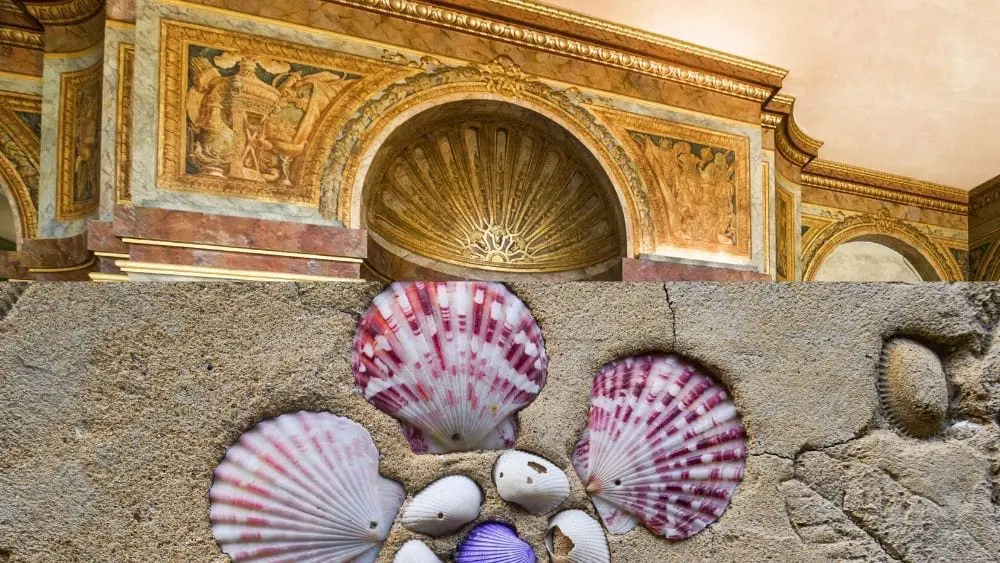
Bottom: Simpler take on shell-inspired decor.
For those not looking for Halloween-ish vibes year round, or for the bourgeoisie decorating their beach house, the coquille (which means “shell” in French) design is much more cheerful. Coquille involves bringing shells and shell-like design into your space. And while that can mean carving out the top of a wall to mirror the shape of an oyster shell, you can also bring this design in in much simpler ways.
Instead of an entire wall covered in coquille design, snag a small décor piece that involves shells. Shell wind chimes are popular, and can be made by hand if you’re crafty enough. Or, think about embedding a trim or backsplash with shells from your favorite locations. This memory wall will double as a beautiful nod to Versailles design.
Marquetry
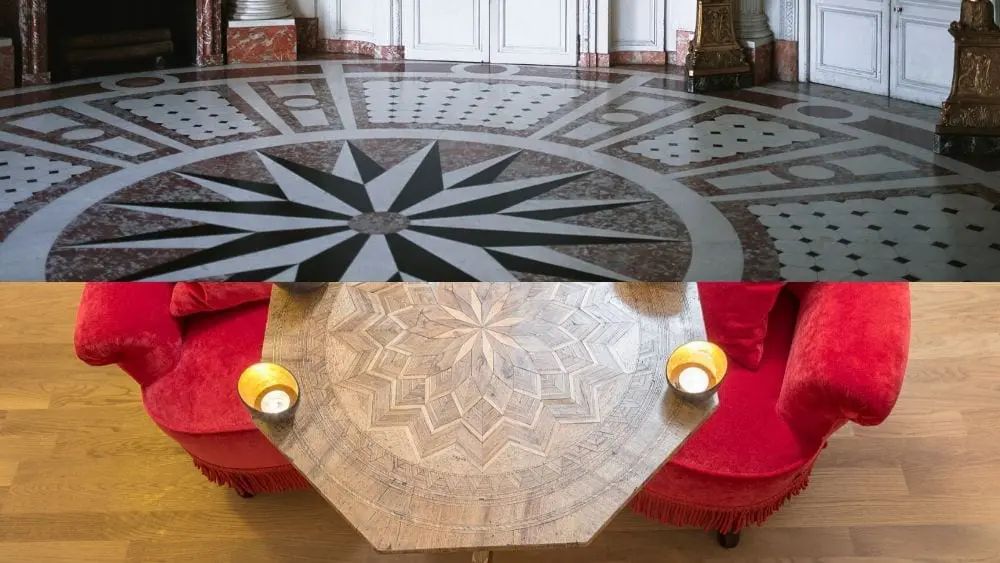
Bottom: Marquetry table paired with red velvet chairs for a modern spin.
Not only was oversized furniture a theme in the 17th and 18th centuries, but it was also grand in simple ways. Marquetry, or the art of inlaying different colored pieces of wood to create a pattern on furniture, was growing in popularity at the time. Channel your inner Sun King with statement pieces, such as the table pictured above, to display the beautiful craftsmanship of the style in a practical way.
Gold Accents
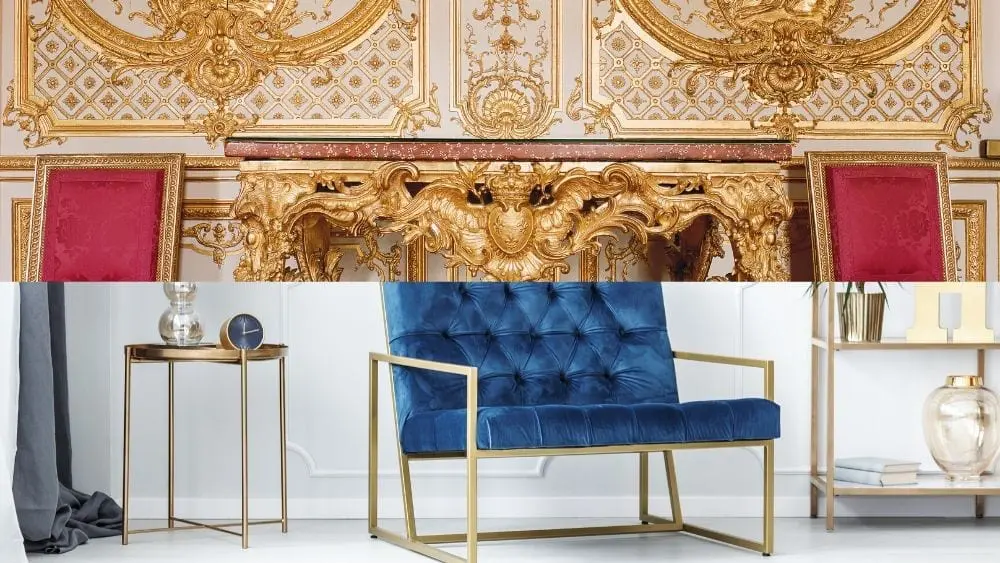
Bottom: Gold accents to embellish a modern room.
Gold has long been a sign of wealth, and French royalty were not exempt from subscribing to this stereotype. Gilded tables and chairs, gold accents on the walls – it’s all commonplace in Versailles. And while your budget likely won’t afford you gold leaf over every wall, establish a sense of quiet sophistication with several strategically placed gold accents.
The modern example above achieves this by balancing the gold table, chair, and shelf with stark white walls and a deep blue velvet cushion. Align with the Versailles aesthetic even more by adding a grotesque or arabesque pattern to the blank wall behind the chair.
Mirrors Everywhere
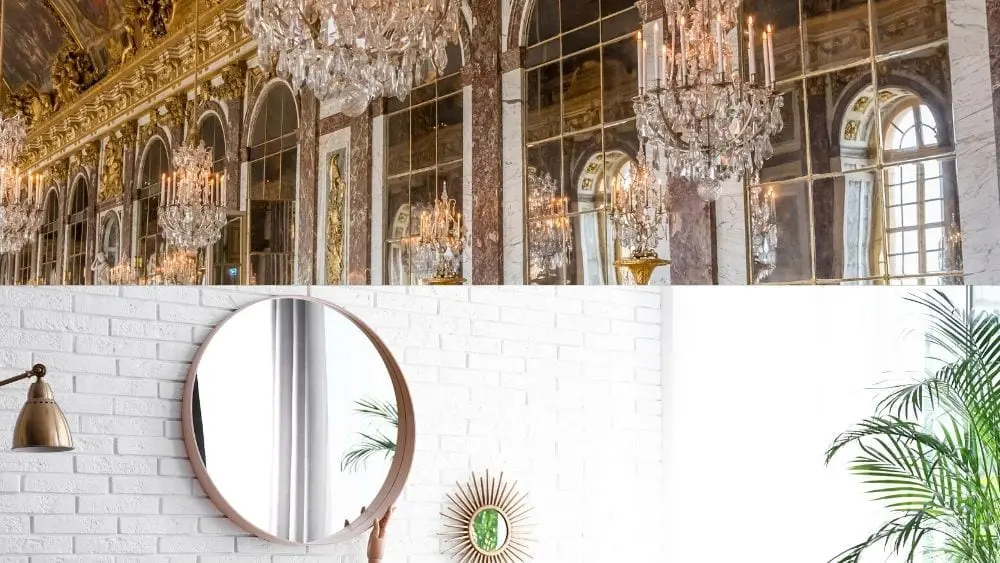
Bottom: A simpler take on having multiple mirrors to open up a space.
The most well-known section of all Versailles is undoubtedly the Hall of Mirrors, Louis XIV’s ostentatious take on the classic funhouse experience. Serving as the central gallery of Versailles, the Hall of Mirrors is meant to both astound and intimidate visitors. For political events, a throne was placed at the end of the hall and guests of the crown were made to parade the nearly 240 feet while court members lined the walkway.
If you don’t have a throne for your living room or friends to double as your royal court when new guests are visiting, that’s okay! (Honestly, it’s probably better, since royal court members were often behind assassination attempts.) You can still pay homage to this famous hall by incorporating several mirrors to bounce around light and give a room a larger-than-life feel. The wall of gold-tinted mirrors pictured above adds an extra level of grandeur to the space.
The Gardens & The Park
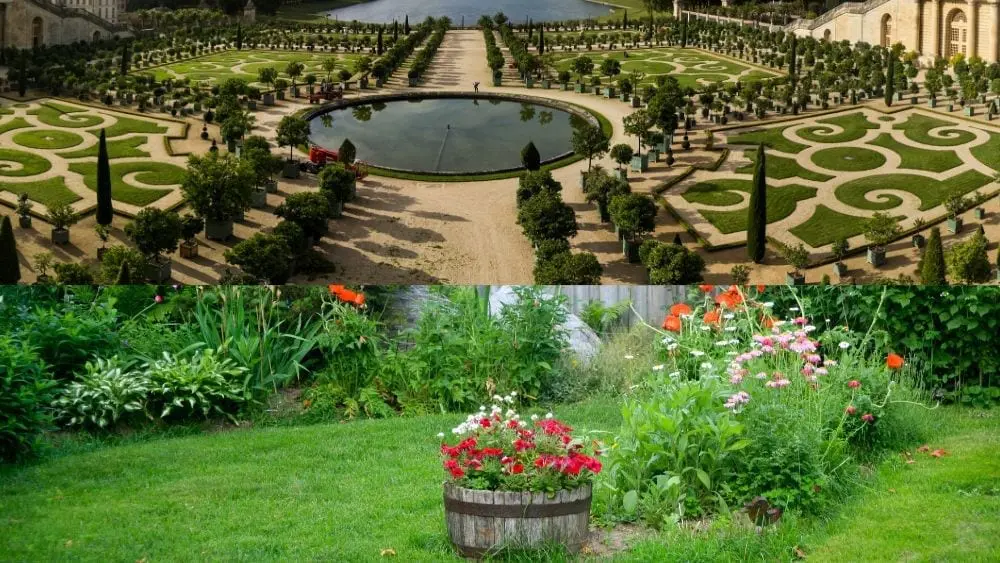
Bottom: A backyard that is much more reasonable for the average homeowner.
Perhaps you’re not looking to make major interior changes, but you still want some part of your home to be worthy of royalty. Outside of the palace walls, the estate grounds surrounding Versailles are just as awe-inspiring as the interior. The Gardens, the Orangery, the Groves, the Walks – they are all designed in the French formal garden style, revering symmetry above all else.
While you probably don’t have space for a parterre more than 1,000 feet long (that’s the size of the Royal Way at Versailles), and likely don’t want to have to do donuts with your lawnmower to get the same intricate designs, you can plan your yard from a symmetrical perspective. Plan for or install a walkway through the middle of your garden – simple stone tiles will do – and then do your best to keep both sides identical. Don’t have enough space for a walkway? Build raised flower beds on both sides of the yard, as many as you’d like, and then plant and groom them to be symmetrical.
For more interior design inspiration – and maybe even a few tips on a government coup d’état – head over to NewHomeSource, and don’t forget to follow us on social media!

Kian Zozobrado joined Builders Digital Experience (BDX) in 2019 as a content writer. A graduate of Southwestern University with a degree in English, Kian is passionate about the written word and making connections. Outside of work, Kian also serves as president of the Board of Directors for the Writers’ League of Texas.
 9 Ways to Create A Sleep Sanctuary In Your Bedroom
9 Ways to Create A Sleep Sanctuary In Your Bedroom